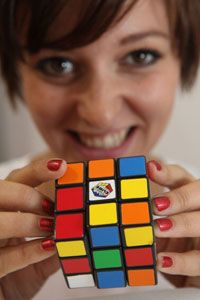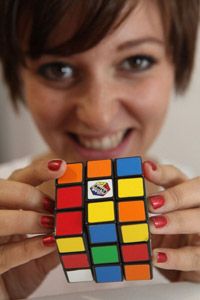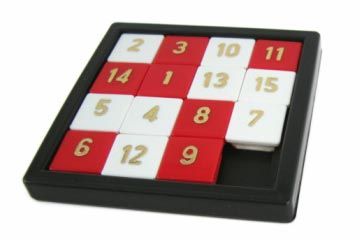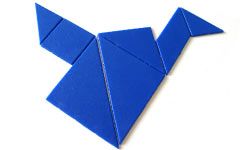I slumped down in the forest green vinyl seat aboard the yellow bus, focusing on the task at hand. In 20 minutes, we'd pull into the parking lot at a rival school for a volleyball match. Until then, a different competition was far more pressing: a Rubik's Cube showdown.
My friend and I were silently at war, twisting and turning the rows on the three-dimensional cube, willing the colors to line up. Or at least I thought we were. When the bus screeched to a halt, I struggled with a few final moves, but my opponent was already done, thanks to some surreptitious actions in the seat behind me. She'd peeled off and repositioned the stickers in near-perfect form. Whether or not she followed the rules, I had to admit it was clever. After all, she solved the puzzle before I did.
Advertisement
Like most children of the 80s, we toyed with a classic Rubik's Cube, a square that measured 2.25 inches (5.7 centimeters) on each of its six sides, a design that remains largely unchanged today.
To begin solving a Rubik's Cube, you must first decipher the universal shorthand used to spell out a sequence of moves:
- R: Right side of cube
- L: Left side of cube
- B: Back side of cube
- F: Front side of cube
- U: Top side of cube
- D: Bottom side of cube
Any letter with a lowercase "i" following it means you should make a counterclockwise, or inverse, rotation. And any letter with a "2" following it means a 180-degree turn is required.
After mixing up the colors by turning the rows at random, the object is to make each face of the square a solid color again. This sounds simple enough, but for some, the Rubik's Cube has become a frustrating mystery. For others, it's a task that can be accomplished in a matter of minutes.
Since the early 1980s, Cubers have been setting world records. In 2011, Feliks Zemdegs of Australia solved a Rubik's Cube in a mere 5.66 seconds [source: The International World Record Breakers' Club]. Others have mastered Rubik's Cube solutions while blindfolded, with a hand tied behind their backs and by using only their feet.
So, what's the basic method behind solving that colorful cube?
Advertisement



